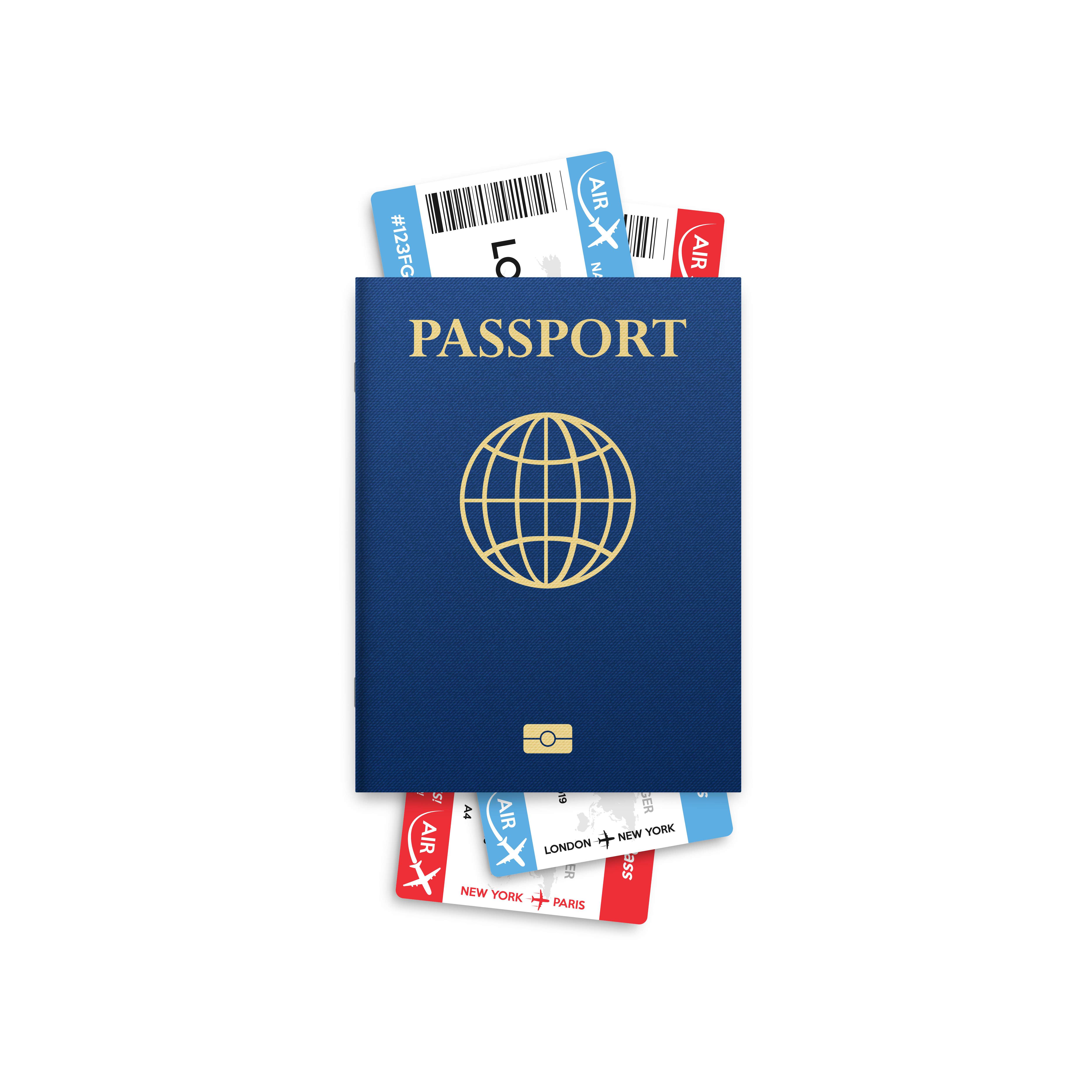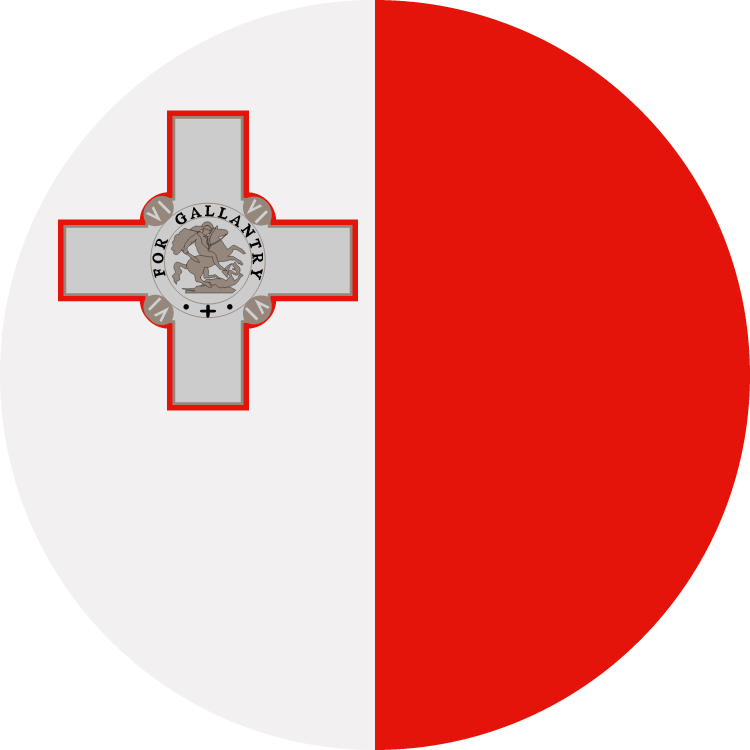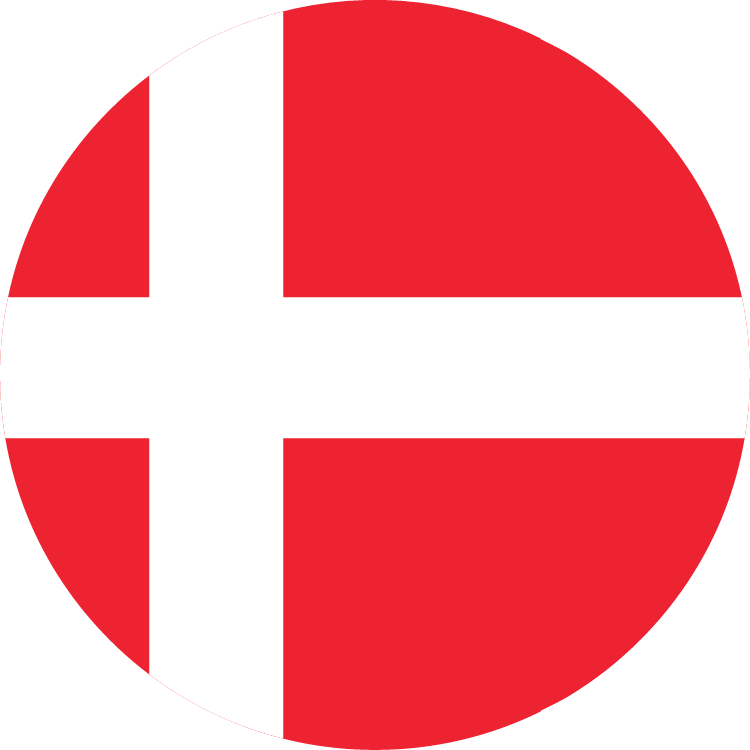
Europe Tourist Visa from India: Unlocking the Gateway to Unforgettable Experiences!
Central Europe, is renowned for its rich cultural heritage, historical landmarks, and technological prowess. Boasting picturesque landscapes, vibrant cities, and a commitment to sustainability, Germany stands as a hub of innovation, tradition, and modernity.


Germany

Poland

Italy

France

Netherland

Malta

Austria

Sweden

Ireland

Denmark

Finland

Spain
Why Explore Europe and the Best Time to Travel?
- Germany
- Italy
- France
- Luxembourg
- Switzerland
- Netherland
- Poland
- Austria
- Sweden
- Ireland
- Denmark
- Finland
- Malta
- Latvia
- Spain
Germany offers a blend of historic charm, modern innovation, and diverse landscapes. From the iconic Berlin Wall to the fairytale castles along the Rhine, there’s something for every traveler. The best time to visit depends on your preferences:
Spring (April to June):
Mild temperatures, blooming flowers, and outdoor events.
Summer (July to August):
Warm weather, festivals, and longer days for exploration.
Autumn (September to October):
Vibrant fall foliage, wine festivals, and fewer crowds.
Winter (December to February):
Magical Christmas markets, winter sports, and festive atmosphere.
Unravel the allure of Italy, a treasure trove in Southern Europe boasting timeless beauty, artistic wonders, and culinary marvels. From the ancient wonders of Rome to the romantic canals of Venice, Italy’s diverse landscapes and cultural splendors create an enchanting backdrop for every traveler. The optimal time to visit varies:
Spring (April to June):
Experience mild temperatures, blossoming flora, and vibrant outdoor events.
Summer (July to August):
Bask in warm weather, partake in lively festivals, and enjoy longer days of exploration.
Autumn (September to October):
Revel in the hues of vibrant fall foliage, savor wine festivals, and embrace a quieter atmosphere.
Winter (December to February):
Immerse yourself in magical Christmas markets, engage in winter sports, and relish a festive ambiance.
France, with its iconic landmarks, diverse regions, and cultural richness, is a dream destination. The best time to visit depends on your preferences:
Spring (April to June):
Blossoming gardens, mild weather, and outdoor festivals.
Summer (July to August):
Vibrant Street life, music festivals, and extended daylight for exploration.
Autumn (September to November):
Harvest festivals, wine tastings, and the stunning fall foliage.
Winter (December to February):
Enchanting Christmas markets, winter sports, and cozy atmospheres.
Luxembourg, a hidden gem in Western Europe, boasts a captivating allure year-round, catering to diverse preferences:
Spring (April to June):
Immerse yourself in blossoming gardens, enjoy temperate weather, and explore the outdoor wonders.
Summer (July to August):
Revel in vibrant festivals, partake in outdoor events, and relish the extended daylight hours.
Autumn (September to November):
Witness a tapestry of autumn colors, engage in cultural festivals, and savor the tranquil ambiance.
Winter (December to February):
Experience charming Christmas markets, indulge in winter festivities, and cozy up in retreats.
Switzerland, renowned for its breathtaking landscapes and cultural diversity, is a dream destination. The ideal time to visit depends on your preferences:
Spring (April to June):
Blooming meadows, mild temperatures, and outdoor activities.
Summer (July to August):
Lively festivals, outdoor adventures, and longer daylight hours.
Autumn (September to November):
Golden landscapes, harvest festivities, and a tranquil ambiance.
Winter (December to February):
Enchanting Christmas markets, winter sports, and cozy Alpine retreats.
Discover the charm of the Netherlands and find out when is the best time to visit. From picturesque canals to vibrant tulip fields, explore the rich culture and stunning landscapes of this European gem. Plan your trip wisely with our helpful insights on weather, festivals, and top attractions. Start your Netherlands adventure today!
Spring (April to June):
Mild temperatures, the iconic tulip fields in full bloom, and exploring outdoor attractions and strolling along the canals.
Summer (July to August):
Warmer temperatures, explore outdoor festivals, visit museums and historical sites, or simply relax in one of the many charming cafes that dot the streets.
Autumn (September to October):
Cooler temperatures and fewer crowds compared to summer but still showcases beautiful foliage across the country.
Winter (December to February):
Colder temperatures and shorter days but offers unique experiences like ice skating on frozen canals or visiting Christmas markets in cities such as Amsterdam or Maastricht.
Discover the wonders of Poland and find out the best time to visit. From historic cities to stunning landscapes, Poland offers a rich cultural experience. Whether you’re interested in exploring castles, indulging in delicious cuisine, or immersing yourself in vibrant festivals, this guide will help you plan your perfect trip to Poland.
Spring (March to May):
Blooming flowers and milder temperatures.
Summer (June to August):
Weather becomes warm and sunny. Enjoy outdoor festivals, concerts, and explore the Baltic Sea coastline or picturesque lakeside towns.
Autumn (September to November):
Cooler temperatures but also stunning fall foliage that paints the landscape with vibrant colors.
Winter (December to February):
Magical atmosphere with snow-covered landscapes and various winter activities like skiing or ice skating.
Discover the enchanting beauty of Austria and plan your perfect getaway. From stunning landscapes to rich history and cultural treasures, Austria has it all. Find out why Austria should be at the top of your travel list and learn about the best time to visit this captivating country. Start planning your Austrian adventure today!
Spring (April-May):
Milder weather with blooming flowers dotting the countryside
Summer (June-August):
Longer days perfect for outdoor activities like hiking or cycling.
Autumn (September-October):
Stunning foliage as nature paints itself in vibrant colors before winter arrives again.
Winter (December to March):
Fan of winter sports such as skiing or snowboarding, ideal for hitting the slopes.
Discover the enchanting beauty of Sweden and plan your perfect getaway. From stunning landscapes to vibrant cities, Sweden has it all. Find out the best time to travel month by month for an unforgettable experience. Start planning your Swedish adventure today!
Winter (December-February):
Perfect for those wanting to experience a true winter wonderland, with plenty of snow and skiing opportunities.
Summer (June-August):
The most popular with tourists, as it is when the country experiences its warmest weather.
Autumn (September-November):
Cooler temperatures, Wine Festivals & fewer crowds.
Spring (March-May):
You will experience fewer crowds and can witness the stunning change of colors in the foliage.
There are numerous reasons why Ireland is a popular travel destination, from its rich history and stunning landscapes to its vibrant culture and friendly locals. It’s no wonder that many people dream of visiting this beautiful country.
Spring (April to May):
Less crowded and more affordable, consider traveling.
Summer (June to August):
mild and there are numerous festivals and events, higher prices and larger crowds.
Autumn (September-October):
Enjoy beautiful scenery and cultural experiences without the large crowds.
Winter (November to March):
Many tourist attractions and accommodations may be closed, and the weather can be quite harsh. However, if you’re a fan of outdoor activities such as hiking or skiing, these months could offer unique experiences.
Denmark has long been a popular tourist destination for travelers looking to experience the vibrant culture, stunning landscapes, and rich history of this Nordic country. As a member of the European Union and Schengen Area, Denmark offers visitors an easy visa process making it an ideal travel destination for many.
Spring (April to May) or Fall (September to October):
These months offer pleasant weather and fewer tourists, making it a great time to explore all that Denmark has to offer without the hustle and bustle of peak season.
Summer: (June to August):
Warm weather and longer days. However, this also means that the country can be more crowded and prices for accommodations may be higher.
Winter: (November to March):
Christmas markets, then traveling during the holiday season, Cultural or seasonal events.
Finland is a Nordic country located in Northern Europe, bordered by Sweden, Norway and Russia. It is known for its stunning landscapes, vibrant cities, and unique culture. The best time to visit Finland depends on your preferences and what you want to experience. In this article, we will explore why you should consider visiting Finland and the best time to travel.
Winter (December – February):
Snow-covered landscapes, frozen lakes, and sub-zero temperatures. This is the perfect time for winter activities such as skiing, snowmobiling, ice fishing, and husky sledding.
Spring (March – May):
Mild weather and longer days. The snow begins to melt, and the landscapes start turning green, making it a beautiful time to visit for nature lovers.
Summer (June – August):
The country experiences long days, with almost 24 hours of daylight in some parts, giving travelers more time to explore the beautiful landscapes. It’s also the best time for outdoor activities like camping, kayaking, and hiking.
Autumn (September to October):
Warm weather, festivals and longer days for exploration.
While Malta is a great destination year-round, there are certain months that may be more suitable for different types of travelers. Here’s a month-by-month guide to help you plan your trip:
January:
The weather can be unpredictable, but it’s a good time to visit if you want to avoid crowds and get cheaper prices.
February:
Carnival season in Malta is a colorful and lively time to visit, with parades and festivities taking place throughout the island.
March:
Springtime in Malta means blooming flowers and pleasant weather, perfect for outdoor activities like hiking and exploring.
April:
Easter celebrations make April a popular time to visit, but be prepared for larger crowds.
May:
The weather starts to warm up, and the sea becomes more inviting for swimming and diving.
June:
The peak tourist season begins, with hot and dry weather perfect for beachgoers.
July-August:
These are the hottest months in Malta, and also the busiest. Expect high temperatures, crowded beaches, and higher prices.
September:
As summer draws to a close, the weather starts to cool down, making it a more comfortable time to visit.
October:
The shoulder season begins, with fewer tourists and cooler temperatures. It’s a great time for outdoor activities like hiking and sightseeing.
November:
The weather can be unpredictable, but prices are lower, and you’ll have more of the island to yourself.
December:
Christmas celebrations make December a festive time to visit, with markets and decorations around the island.
Latvia is a small, yet beautiful, country located in the Baltic region of Europe. This hidden gem has so much to offer, from picturesque landscapes to bustling cities to rich history and culture. If you’re considering visiting Latvia, here’s some information on why it’s worth exploring and when the best time to travel would be.
Spring (April to June) & Autumn (September to October):
During these months, you can still enjoy pleasant weather and fewer crowds, but at a lower cost. Accommodation and flight prices tend to be lower during these times.
Summer (June to August):
Take advantage of outdoor activities such as hiking or swimming.
Winter (December to March):
These are great opportunities to experience Latvian culture and traditions firsthand.
Spain is a beautiful country located in southwestern Europe, known for its rich history, diverse culture, and stunning landscapes. From bustling cities to quaint villages, there’s something for everyone in Spain. Whether you are interested in art, food, or outdoor adventures, Spain has it all.
Spring (March to May):
This is an ideal time to visit Spain before the peak tourist season begins in June. The weather is mild and pleasant with blooming flowers and greenery all around. It’s a great time for outdoor activities such as hiking, cycling, and sightseeing.
Summer (June to August):
The peak tourist season in Spain where you can experience the lively atmosphere with festivals, street parties, and beach activities. The temperatures are high during this time, so it’s best to visit coastal regions or escape to the mountains for cooler weather.
Fall (September to November):
This is another great time to visit Spain as the weather remains warm and pleasant, making it perfect for outdoor activities. The crowds start to thin out, and you can experience a more local and authentic side of Spain.
Winter (December to February):
While most people might think winter is not an ideal time to visit Spain, it still has its own charm. You can experience Christmas markets, festivals, and skiing in the mountains. The weather is cooler, so it’s a great time to explore the cities without the crowds.
General Cost Involved in Europe Visit
Visa Fee
Mandatory Travel Insurance
Accommodation and Transportation Costs
Documents Required to Apply for Italy Visit Visa
● Passport
● Application form with right details
● Passport-sized Photos
● Travel Itinerary
● Proof of Accommodation
● Travel Insurance
● Financial Proof
Frequently Asked Questions
How long does it take to process a Germany Visit Visa?
Ans: Processing times vary but generally take 15 calendar days from the day of submission.
Can I work with a Germany Tourist Visa?
Ans: No, a tourist visa does not permit employment. For work purposes, you need a separate work visa.
Is travel insurance mandatory for a Germany Visit Visa?
Ans: Yes, proof of travel insurance covering a minimum of €30,000 medical expenses is mandatory for visa approval.
Is it possible to visit multiple Schengen countries with an Italy tourist visa?
Ans: Yes, if Italy is your main destination, you should apply for a Schengen Visa through the Italian embassy or consulate. Once approved, you can travel to other Schengen countries within the visa validity period.
What should I do if my Italy tourist visa application is denied?
Ans: If your application is denied, you will receive a letter explaining the reasons. You may choose to appeal the decision or reapply, addressing the issues mentioned in the rejection letter.
How long should my passport be valid to apply for an Italy tourist visa?
Ans: Your passport should be valid for at least three months beyond the intended date of departure from the Schengen area. It’s advisable to renew your passport, if necessary, before applying for the visa.
How long does it take to process a France Visit Visa?
Ans: Processing times may vary, but the standard duration is typically around 15 calendar days from the date of submission.
Can I work with a France Tourist Visa?
Ans: No, a tourist visa does not authorize employment. Separate work visas are required for any work-related activities in France.
Do I need to book my travel tickets before applying for a France Visit Visa?
Ans: It’s advisable to have a tentative travel itinerary and, if possible, a flight reservation. However, it’s not mandatory to purchase tickets before the visa application. Confirm with the embassy or consulate regarding their specific requirements.
Do I need travel insurance for my trip to the Netherlands?
Ans: It is highly recommended to have travel insurance for your trip to the Netherlands. Travel insurance can protect you from unexpected events such as medical emergencies, trip cancellations, lost luggage, and more. It provides peace of mind and financial protection in case of any unforeseen circumstances during your travel.
How long can visitors stay in Poland with a visit visa?
Ans: Visitors with a visit visa are typically allowed to stay in Poland for up to 90 days.
Are there any specific financial requirements for an Austria visit visa?
Ans: Yes, there are specific financial requirements for an Austria visit visa. The exact amount may vary depending on factors such as the duration of your stay and the purpose of your visit. Generally, you will be required to show proof of sufficient funds to cover your expenses during your stay in Austria. This can include bank statements, income documents, sponsorship letters, or any other evidence that demonstrates your ability to support yourself financially while in the country. It is advisable to consult the Austrian embassy or consulate in your country for detailed and up-to-date information regarding the specific financial requirements for obtaining a visit visa to Austria.
How long can I stay in Sweden with a visit visa?
Ans: With a visit visa, you can stay in Sweden for a maximum of 90 days within a 180-day period. It’s important to abide by the visa regulations and ensure that you do not overstay your permitted duration.
What are the permitted activities with an Ireland visit visa?
With an Ireland visit visa, you are allowed to engage in various activities during your stay. These include tourism, attending business meetings or conferences, participating in short-term courses or training programs, and visiting family or friends. It’s important to note that working is not permitted under a visit visa.
Can I extend my stay in Denmark on a visit visa?
Ans: No, it is generally not possible to extend your stay in Denmark on a visit visa. Visit visas are typically issued for a specific duration and cannot be extended beyond that period. If you wish to stay longer, you may need to apply for a different type of visa or permit that allows for a longer stay, such as a work visa or residence permit. It is recommended to consult with the Danish immigration authorities or an immigration lawyer for specific guidance on extending your stay in Denmark.
Are there any restrictions or limitations on a Finland visit visa?
Ans: Yes, there are certain restrictions and limitations on the Finland visit visa. Some common restrictions include the duration of stay, which is typically limited to a certain number of days or months. Visitors are also usually not allowed to engage in any form of employment while on a visit visa. Additionally, it’s important to note that visitors must have sufficient funds to cover their expenses during their stay and may be required to provide proof of accommodation and travel arrangements. Moreover, it’s essential to comply with all immigration laws and regulations during the visit.
What are the reasons that may lead to the rejection of a Malta visit visa application?
Ans: There are several reasons that may result in the rejection of a Malta visit visa application. Some common factors include inadequate documentation, insufficient proof of financial means to support the trip, failure to demonstrate a valid reason for travel, previous visa violations or overstays, lack of ties to the home country indicating a potential intention to overstay in Malta, or any concerns regarding national security or public health. It is important to carefully review and fulfill all the requirements specified by the Maltese authorities when applying for a visit visa.
Is there an age limit for applying for a Latvia visit visa?
Ans: There is no specific age limit for applying for a Latvia visit visa. However, all applicants, regardless of age, must meet the necessary requirements and provide the required documentation to be eligible for a visa.
How long does it take to process a Spain Visit Visa application?
Ans: The processing time for a Spain Visit Visa application can vary depending on various factors, such as the current workload of the consulate or embassy, the completeness of your application, and any additional security checks that may be required. It is advisable to check with the specific consulate or embassy where you are applying for the most up-to-date information on processing times.
Can I work on a tourist visa in Luxembourg?
Ans: No, a tourist visa typically does not permit employment. If you plan to work in Luxembourg, you would need to apply for an appropriate work visa based on your employment circumstances.
Are there language requirements for the visa application?
Ans: While there may not be strict language requirements for the visa application, having a basic understanding of English, French, or German can be beneficial for communication during your stay.
Can I extend my stay in Luxembourg with a tourist visa?
Ans: Tourist visas are typically for short stays. If you wish to extend your visit, it’s advisable to inquire about extension possibilities at the immigration office in Luxembourg before your initial visa expires.
Can I apply for a Switzerland Visit Visa online, or is a physical application required?
Ans: Application procedures may vary, and it is recommended to check with the Swiss embassy or consulate in your region. Your visit visa consultant also can help you with the information. Precisely, some visa applications can be submitted online, while others may require a physical presence.
What is the validity period of a Switzerland Tourist Visa?
Ans: The validity of a Switzerland Tourist Visa depends on the type and purpose of the visit. Tourist visas are typically issued for short stays, ranging from a few weeks to a few months.
Are there specific financial requirements for a Switzerland Visit Visa?
Ans: Yes, a Switzerland Visit Visa application usually requires proof of financial means to cover your stay. Ensure that you provide sufficient evidence of financial stability, such as bank statements or sponsorship letters, as per the visa requirements. Check with your nearest Switzerland visit visa consultant for more details.




